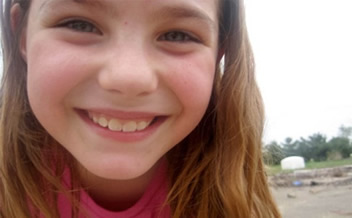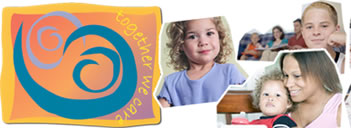|
Editor’s Note:
This edition of Safe Start explores one of the most significant safety risks facing Australian children…bullying. According to experts, bullying is experienced by 1 in 6 Australian children on a weekly basis. Bullying can have devastating effects on both children who are bullied and on those who bully. Children who are bullied are more likely to experience greater stress, anxiety, depression, illness and, in the most extreme cases, suicide. Young people who bully are more likely to drop out of school, use drugs and alcohol and engage in criminal behaviour.
I hope this edition sparks discussion, reflection and, most importantly, action to address bullying that may be occurring within your school or more broadly in your community. I welcome any questions or comments you would like to share.
Kim Jackson
Founder and Director, Children’s Safety Australia Inc
Meet Ashlynn Connor (below), a seemingly happy-go-lucky ten year old girl who did well at school, loved stray cats and dreamed of someday becoming a vet. Sadly Ashlynn also carried with her the torment of bullies, who, for years, called her 'a slut’, ‘fat’ and ‘ugly’.

Despite a strong anti-bullying school policy, Ashlynn’s attempts to report the bullying were discounted and ignored. In fact three different teachers told Ashlynn to 'stop tattling' after she reached out for help. Her mother, Stacy, told her daughter to go to the principal if it happened again. Ashlynn pleaded with her mother to be home schooled. Feeling unable to face the misery any longer, in November 2011 Ashlynn hung herself instead.
Too many children and young people experience hopelessness and despair because of bullying. Research shows those who are bullied are more likely to consider or perform suicide, or ‘bullycide’ (bullying related suicide), than those who are not.
Ashlynn’s story sends a powerful message to adults responsible for keeping children safe, be they parents, carers, relatives, teachers, other school staff or community members. We must do all we can to protect our children and to advocate on their behalf when their attempts to seek help are rejected. Ashlynn’s story also teaches us a number of crucial lessons…
- The best anti-bullying policy in the world is worthless, unless it is enforced – which sadly wasn’t the case for Ashlynn’s school.
- Telling children not to tattle/dob or to solve it themselves is not supportive intervention… it can actually fuel the problem. They don't have a choice about going to school, and we must ensure that they are in an environment that fosters respect, caring, and safety for everyone.
- Teachers and other school staff must respond take reports of bullying seriously, compassionately and do what they can to support children who experience bullying. While some incidents may appear trivial, it is essential that staff receiving reports gauge the physical and psychological impact on children and factor this into their response.
- Every effort should be taken to promote a positive school culture that doesn’t tolerate bullying and that encourages children to report bullying – whether they experience it themselves or witness this behaviour.
- Teachers also need support to take these important safety steps in the context of what can be overwhelming realities of their jobs. They, too, need help and proactive support rather than blame in order to succeed at giving kids what they need to be safe.
- Parents have a responsibility to listen to, believe and support their children and to advocate on their behalf in discussing with relevant staff how the issue/s can be resolved. The below article provides advice regarding what young people who are bullied need.
- Finally, children must be empowered with skills and strategies to respond to, and report bullying, whether it is directed at them or if they are a bystander. They must also be encouraged to persist in reporting until they get the help they need.
We are too late to protect Ashlynn. Thankfully we’re not too late to protect others...
Source: Information for this article has been adapted from Kidpower Teenpower Fullpower International enewsletter, written by Irene van der Zande, Executive Director/Founder (www.kidpower.org).
As described in the previous article, too many children and young people experience hopelessness and despair because of bullying. Parents and other protective adults are often unaware of the psychological impacts of bullying or what they can do to help. Irene van der Zande, the founder and director of Kidpower provides the following list of five things young people who are bullied need:
1. Calm, determined support and advocacy from their parents and other caring adults. Many children try to protect their parents from being upset and wait to disclose a problem until it has gone on a long time. They need messages from their adults like, "There is nothing in my life more important than your safety and well being. Even if I seem very busy, I really want to know. I will do my best to listen and not lecture or panic. Please let me know if anyone is making you feel unsafe, and we will work together to figure out what to do."
2. Positive social groups where they can feel accepted. If this is not possible at your child’s school or neighbourhood, find a suitable youth group or community organisation where they can get involved.
3. The opportunity to learn and practice "people safety" skills. Practicing how to set boundaries, get help, get away, and, if need be, physically defend yourself can build confidence and increase safety.
4. Perspective that this problem will not go on forever, does not mean you are a bad person and is not your fault. For a child who is deeply upset, often the best way to get perspective and deal with overwhelming feelings is to have professional counselling. School counsellors might provide this or give referrals to community organisations.
5. For the bullying to stop. Adults must take leadership to give children supervision and guidance to ensure that they have the tools for being safe with one another. If parents cannot get the bullying to stop in a school, sometimes the best answer is to find another school.
Source: Information for this article has been adapted from Kidpower Teenpower Fullpower International enewsletter, written by Irene van der Zande, Executive Director/Founder (www.kidpower.org).

On Friday 16 March 2012 schools throughout Australia will join together to celebrate the annual National Day of Action Against Bullying and Violence. The focus of the 2012 day will be on parents and families taking a stand together with school communities and recognising the important role everyone plays.
Wear orange and take a stand together on 16 March 2012!
Resources and activity ideas to promote the 2012 National Day within your school or community are available from the Bullying No Way (BNW) website: http://www.bullyingnoway.com.au/ talkout/nationalday.shtml
How will your students, your school or your wider community promote the 2012 National Day of Action and the importance of working together? Share your positive actions and outcomes. Your contribution could be posted on BNW, featured in the BNW e-bulletin or profiled in local or national media. Visit the BNW website for more information.
We congratulate Bruce and Denise Morcombe, founders of the Daniel Morcombe Foundation (DMF), who were named Queensland's nominee for 2012 Australian of the Year. Bruce and Denise have dedicated their lives to promoting children’s safety since the disappearance of their son Daniel in 2003.
Premier Anna Bligh, who presented the Morcombes with their award, said they have shown immense fortitude and bravery, their great dignity drawing widespread admiration from the Australian community.
On 25 January 2012 the Morcombes attended the Australian of Year Awards ceremony, representing Queensland. Actor Geoffrey Rush was named Australian of the Year, despite a groundswell of community support for the Morcombes.
Bruce and Denise have regularly partnered with Children’s Safety Australia Inc. promoting child protection events and co-developing resources. We take this opportunity to thank them for their ongoing support and to acknowledge their incredible commitment to children’s safety.

You can support the DMF by attending the Dance for Daniel to be held at the Caloundra RSL on Saturday, 31 March 2012. Tickets are $195 each and can be purchased via www.danielmorcome.au.au/dance or mob: 0420 300 737.
Queensland schools and community groups are encouraged to start planning an event to commemorate the 2012 Child Protection Week, which will be held from 2 – 8 September.
Child Protection Week is coordinated nationally by NAPCAN and, in Queensland, by the Child Protection Week Committee to promote the value of children and focus attention on the issues of child abuse and neglect.
Non-government organisations, community organisations and networks are encouraged to apply for regional or activity grants offered by the Queensland Child Protection Week Committee for staging public events that positively support the Child Protection Week. Events must embrace the theme of Child Protection Week - Protecting Children is Everybody's Business - as well as have a community and educational focus.
Regional Grants of $3,000 (including GST) are available for each of the six regional areas of Queensland, including: Far North Queensland Region; North Queensland Region; Central Queensland Region; North Coast Region; South East Region; and South West Region.
Funding submissions must reflect collaboration with a minimum of five other agencies within the region. Applications must be received by close of business Monday, 21 May 2012.
Grants of up to $1000 (including GST) are available to non-government and community organisations and networks. Successful applicants may receive full or partial grants.
Local activities receiving funding must:-
- promote the theme 'Protecting children is everybody's business';
- provide people with an opportunity for ongoing involvement in helping prevent abuse and neglect; and
- where possible, link participants to a broad range of information, resources and services already available through government and non-government organisations.
Applications must be received by close of business Friday, 25 May 2012. For more information regarding Activity or Regional Grants, or for assistance in completing your application, contact Child Protection Week Project Officer, Caitlin King on (07) 3844 6414 or caitlin@childprotectionweek.org.au

Children’s Safety Australia Inc. will be selling the 2012/2013 Brisbane, Sunshine Coast and Surrounds and Gold Coast Entertainment Books as our primary fundraiser for the year.
Entertainment™ Books are packed with hundreds of up to 50% off and 2-for-1 offers for the best restaurants, cafes, hotel accommodation, attractions and activities.
The new Book is only $65, and you'll receive $15,000 worth of valuable offers until 1 June 2013. So you can choose what you want to do and when you want to do it.
The 2012 | 2013 edition features many new businesses such as Woolworths, Review Clothing, Stellarossa, The Normanby Hotel, First Choice Liquor Stores, Price Attack, Ribs & Rumps, Hoppy’s Handwash Café and many more!
Pre-order the new 2012 | 2013 Entertainment™ Books today to receive over $180 in additional offers!
Click here to order now!

|